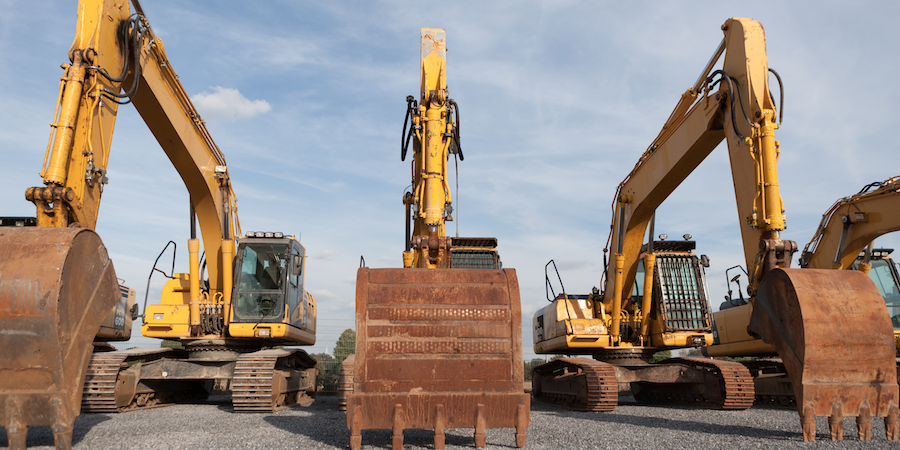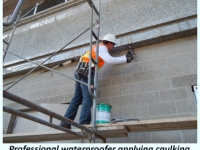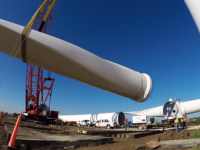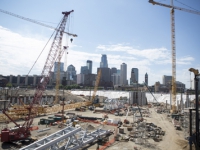Hi there. The Chamberlin Man here.Here’s a piece of trivia I found interesting: The National Institute of Building Sciences Whole Building Design Guide reports that the Tower of Babel was built with mortar and tar or pitch as a sealant. The guide goes on to say that naturally occurring bitumen and asphalt materials have been widely accepted as sealants for many centuries. What may be even more interesting than the long history of “sealants” is the science behind sealant and glazing processes today. Let me tell you, it’s something else. Modern sealants were born with the polymer industry in the 1930s, and they’ve been in a constant state of innovation ever since. Today, there are a plethora of options available – from silicone and acrylic to urethane, butyl and other polymeric types – various formulas have been designed to keep air and moisture out of buildings. Some even provide sound barriers or firestopping!
Reshaping the Construction Industry
Driving down the interstate from Houston to San Antonio recently, I passed a semi–trailer truck carrying a blade for a wind turbine. This isn’t your grandfather’s windmill out in West Texas, it is a blade for one of the new wind turbines being erected to generate power, usually on a wind farm as part of the sustainability movement around the world. This one was gigantic.
June 16, 2015
PPI rises in May; April job openings widen; Manpower survey shows steady hiring plansEditor’s note: Construction Citizen is proud to partner with AGC America to bring you AGC Chief Economist Ken Simonson's Data DIGest. Check back each week to get Ken's expert analysis of what's happening in our industry.The producer price index (PPI) for final demand increased 0.3%, not seasonally adjusted (0.5%, seasonally adjusted), in May but declined 1.1% over 12 months, the Bureau of Labor Statistics (BLS) reported today. AGC posted an explanation and tables focusing on construction prices and costs. Final demand includes goods, services and five types of nonresidential buildings that BLS says make up 34% of total construction. The PPI for final demand construction, not seasonally adjusted, rose 0.3% in May and 2.0% over 12 months. The overall PPI for new nonresidential building construction—a measure of the price that contractors say they would charge to build a fixed set of five categories of buildings—climbed 1.8% since May 2014. The 12-month increases ranged from 0.9% for healthcare construction to 1.4% for warehouses, 1.8% for schools and industrial buildings, and 2.2% for offices.
June 15, 2015
In a passionate op-ed written for North Carolina’s News & Observer, the owner of Whitman Masonry calls for a real crack-down against the worker misclassification epidemic.
June 12, 2015
Pat Kiley presented a forecast on the Houston economy with special focus on the Construction, Real Estate, Oil & Gas, and Finance sectors at the annual Adams and Reese Crawfish Boil.
June 11, 2015
Executives from S&B, Marek, and ISC discussed opportunities in the construction industry with students in the adult education classes at Community Family Centers in Houston.
June 10, 2015
As Industrial Hygiene and Safety Professionals, we introduced the idea of viewing safety through a performance-based looking glass and the value it brings by increasing our sphere of influence across the multiple organizational disciplines. Safety should not be viewed as an “add in” or even a “priority” because priorities change based upon inputs and conditions. The same can be said about statements such as “Safety is our number one goal” since goals change as well. Most in our profession will agree with the premise that “safety must be a value” for lasting success and remain a constant regardless of the inputs and conditions. How can we be successful in creating the culture and mindset needed to drive this value statement?
June 09, 2015
May construction employment, April spending hit 6-year highs; most metros add jobsEditor’s note: Construction Citizen is proud to partner with AGC America to bring you AGC Chief Economist Ken Simonson's Data DIGest. Check back each week to get Ken's expert analysis of what's happening in our industry.Nonfarm payroll employment increased by 280,000 in May, seasonally adjusted, and by 3,058,000 (2.2%) over 12 months, the Bureau of Labor Statistics (BLS) reported on Friday. Construction employment rose by 17,000 and 273,000 (4.5%), respectively, to 6,387,000, the highest level since February 2009. Residential construction employment (residential building and specialty trade contractors) climbed by 8,500 for the month and 149,000 (6.5%) over 12 months. Nonresidential employment (building, specialty trades, and heavy and civil engineering construction) increased by 8,600 and 124,300 (3.3%), respectively. Average hourly earnings of all employees in construction rose to $27.34, a gain of 2.7% over the past year, up from 2.3% in the previous 12 months and 1.3% from May 2012 to May 2013.
June 08, 2015
The construction industry unemployment rate has officially surpassed the national unemployment rate. Between April 2014 and April 2015, nearly 300,000 jobs have been created in the construction industry, and the construction industry unemployment rate is the lowest it has been since 2006. April of this year alone brought in more jobs than “any other industry except professional/business services and healthcare.”The numbers were better than what the construction industry was anticipating. In March, 9,000 jobs were lost, a little under 8,000 jobs just in the nonresidential building field. Researchers believe the small slump was due to the inclement weather seen across the United States during that time.The strongest numbers came from residential building.
June 05, 2015
A New York Times report this week digs into why construction deaths have been rising in New York. The numbers are unfortunate and they underscore the need for better-trained craft professionals on jobsites in NYC and all around the world. From the report:"Eight people have died in construction-related accidents this year, according to the city’s Buildings Department, as many as in all of 2014; the year before, three died. Not since 2008, during the height of the last building boom, has the number of construction accidents been so high, when a rash of episodes, including two falling cranes, claimed 19 lives.The number of accidents has also been on the rise, with 231 in 2014, up 24 percent from the year before. (Accident figures for 2015 were unavailable.)"
June 04, 2015



.jpeg?itok=6uFZXEBH)





.jpeg?itok=4Vi_1nJG)
































